- VMware
- VMware vCenter Server (VCSA), VMware vSphere
- 13 June 2024 at 14:40 UTC
-

- 1/2
Since VMware vSphere 5.5, you have the possibility of using the "Virtual Flash" feature allowing you to use SSDs for the host's swap cache or as a cache for the virtual hard disks of your virtual machines.
In other words, frequently used files will be stored transparently on the SSD cache so that they can be used more quickly later.
Warning : the "Virtual Flash" feature has been deprecated since version 6.7 of VMware vSphere and is only available in the VMware vSphere Web Client (old Flash client). You will therefore not find this functionality in the new HTML5 client "VMware vSphere Client".
Source: VMware ESXi 6.7 Update 2 Release Notes.
- Assign SSDs to Virtual Flash
- Use Virtual Flash as a cache for a VM's virtual hard disk
- Use Virtual Flash as a host swap cache
1. Assign SSDs to Virtual Flash
To get started, navigate to your VMware vCenter Server (VCSA) and click the "Launch vSphere Web Client (Flex)" button.

The "VMware vSphere" login page appears.
Important : note that at present, the Adobe Flash Player plugin required for this old client "VMware vSphere Web Client" no longer works with recent web browsers.

Hence the use of Mozilla Firefox 84 by following our tutorial: Reinstall Adobe Flash Player in 2023 to play flash games or use Flash-based interfaces.

Log in as "administrator@vpshere.local" (as you would with the new HTML5 client).

As VMware tells you, this Flash-based vSphere Web Client has been deprecated since version 6.7 of VMware vSphere.
The vSphere Flash Web Client is deprecated in vSphere 6.7. We recommend upgrading to the new HTML5 vSphere Modern Client as your client...

To begin, in this VMware vSphere Web Client, select the VMware ESXi host on which you want to assign SSDs for Virtual Flash feature.

Once the desired VMware ESXi host is selected, go to: Manage -> Settings -> Virtual Flash -> Virtual Flash Resource Management.

In the "[VMware ESXi host name] - Add Virtual Flash Resource Capacity" window that appears, select the SSD(s) you want to use via Virtual Flash.
In our case we selected the last one, because the others are used for something else in our case.
Note: if you have several SSDs of the same model, you can hover over their name to see their serial number. This will allow you to differentiate them.

The selected SSD(s) appear in the list.

If you look in recent tasks, you will see the task "Configure virtual flash resource" appear.

If you expand the "Capacity for virtual Flash Read Cache" (VFRC) section, you will see:
- Total Capacity for virtual Flash Read Cache: the total capacity of Virtual Flash which corresponds to the sum of the capacity of the assigned SSDs.
- Provisioned Space for virtual Flash Read Cache: disk space currently used via Virtual Flash.
As you can see, by default, almost 1 GB is already reserved. - Free Space for virtual Flash Read Cache: free space on this Virtual Flash resource which can therefore be used to add cache to the virtual hard disks of your virtual machines or for the host's swap cache.

In the "Summary" tab, you will also see the Virtual Flash informations.

If you expand this "Virtual Flash Resource" section, you will be able to see again:
- his capacity
- space used on this Virtual Flash resource
- free space on this Virtual Flash resource

Note that information regarding Virtual Flash will also appear in the web interface of your VMware ESXi host.
Although configuration of Virtual Flash resource is not possible through this web interface.

If you select the corresponding SSD in the web interface of your VMware ESXi host, you will see that the file system used is "VMFS".
Although on the VMware vSphere Web Client side, it says VFFS in the Virtual Flash options.

Share this tutorial
To see also
-
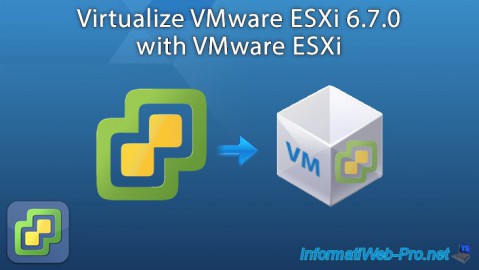
VMware 11/16/2022
VMware ESXi 6.7 - Virtualize VMware ESXi 6.7.0
-
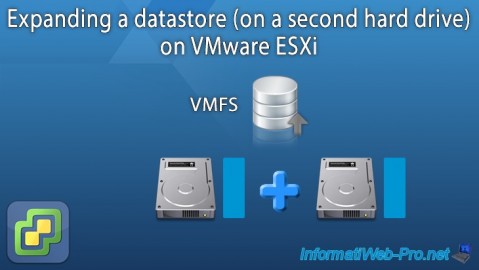
VMware 8/5/2022
VMware ESXi 7.0 / 6.7 - Extend a datastore (on a second hard drive)
-
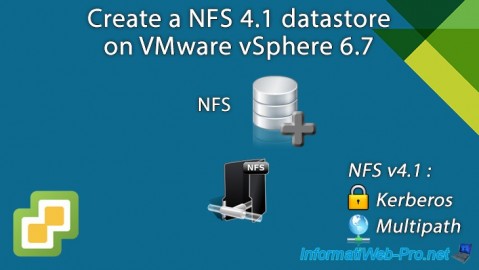
VMware 9/19/2024
VMware vSphere 6.7 - Create a NFS 4.1 datastore
-
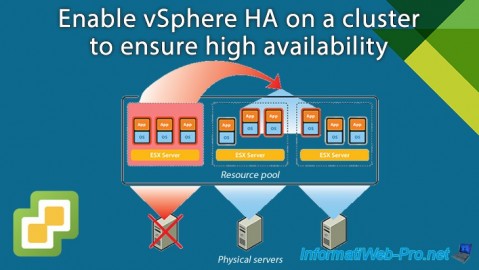
VMware 2/28/2025
VMware vSphere 6.7 - Enable vSphere HA on a cluster

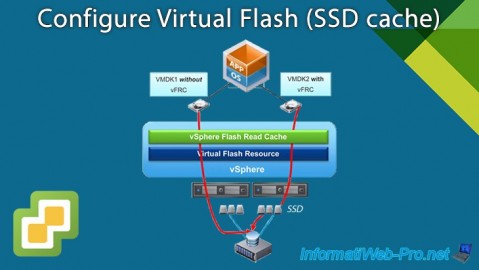
You must be logged in to post a comment